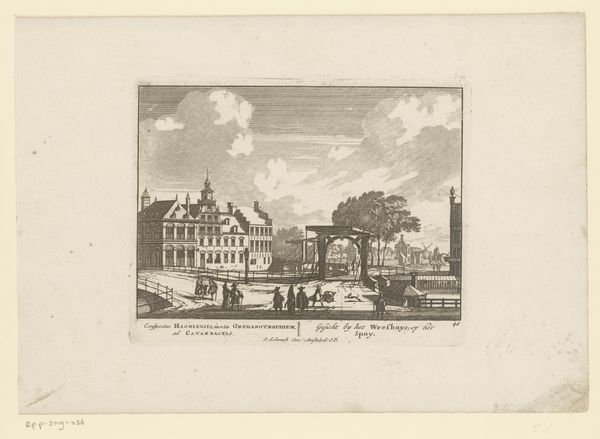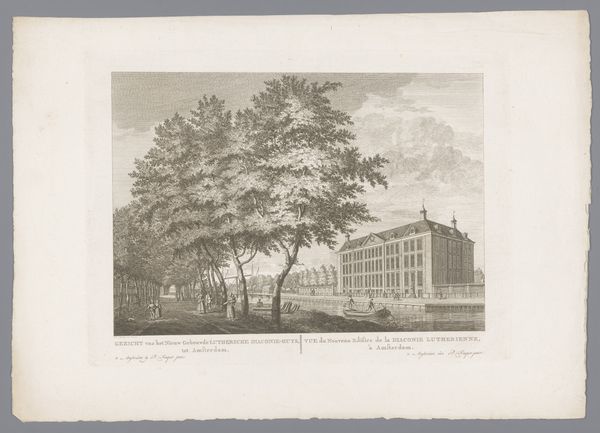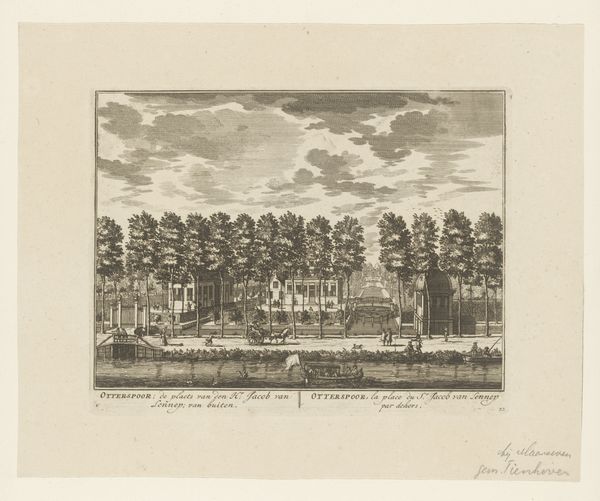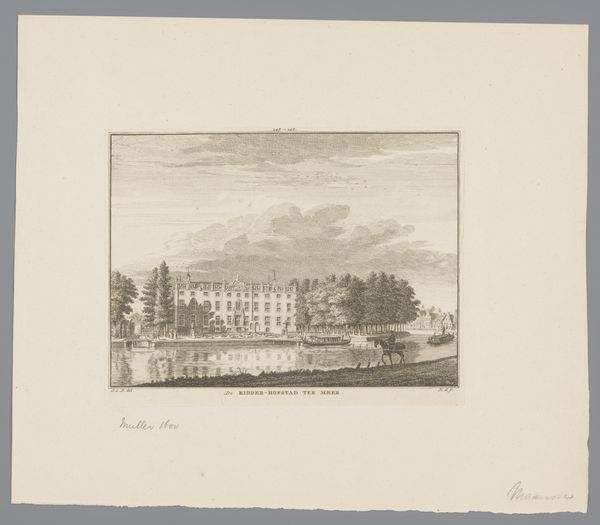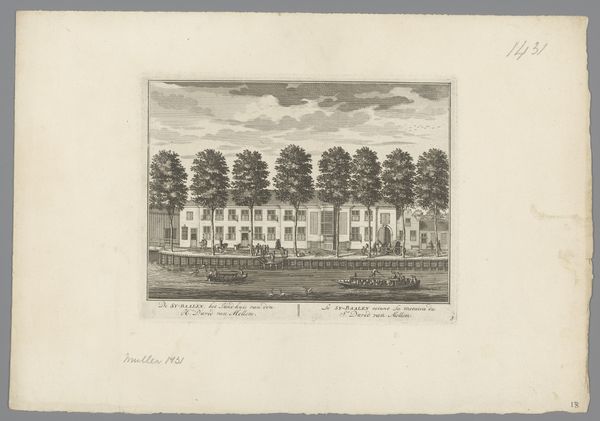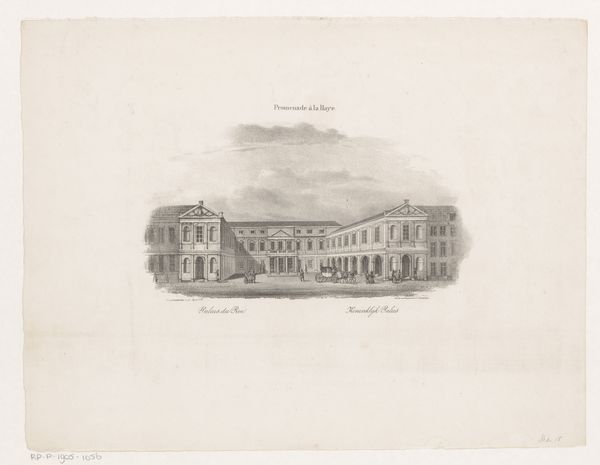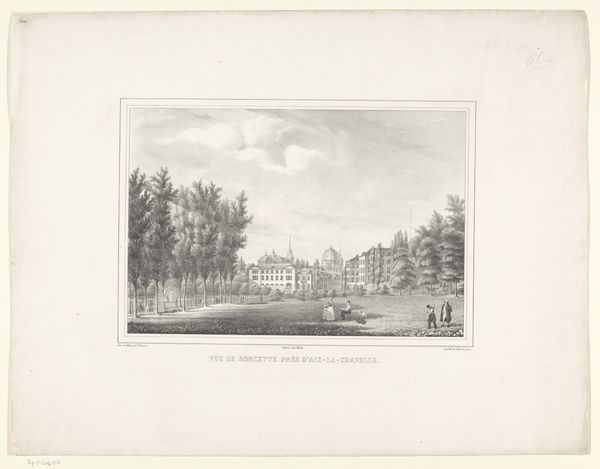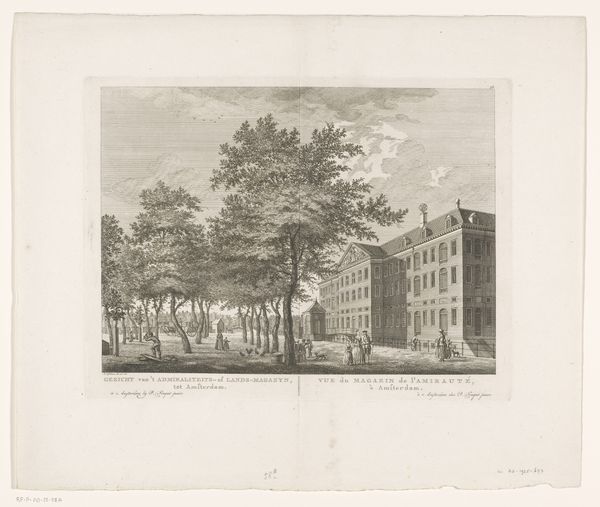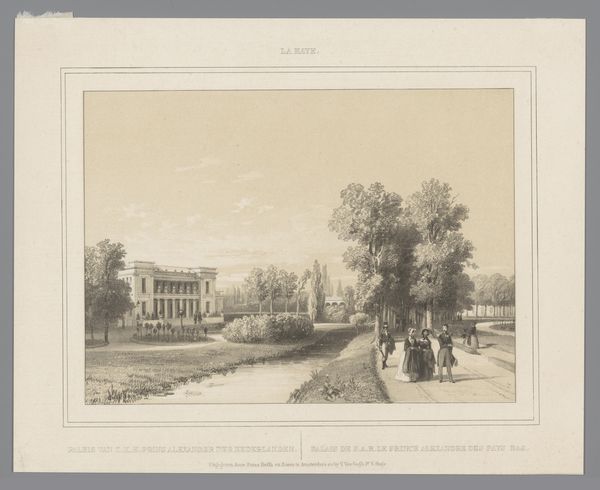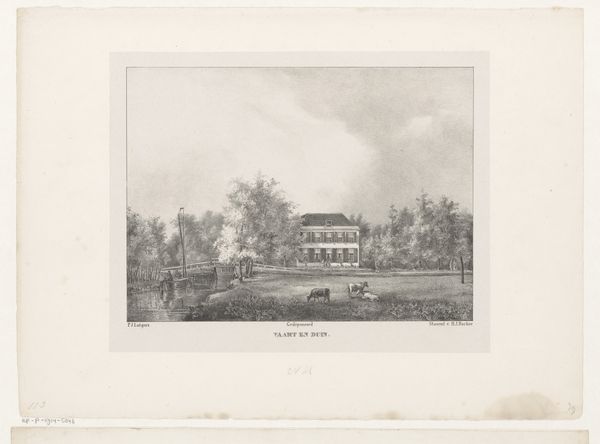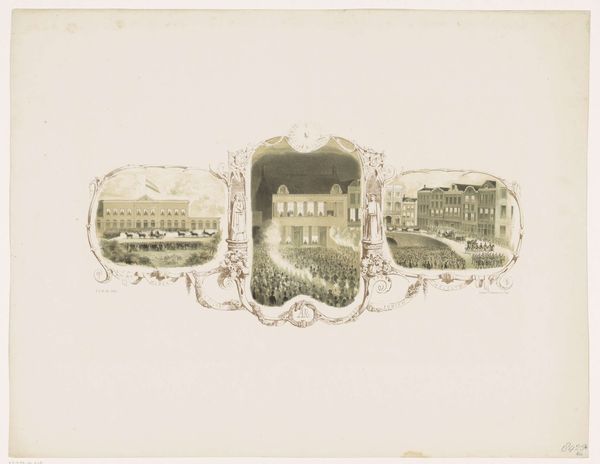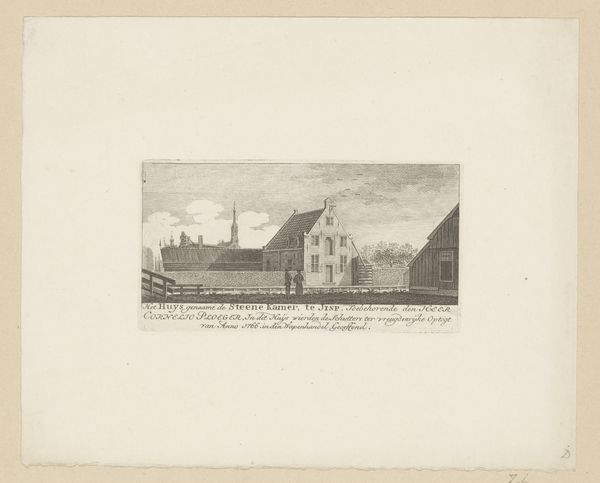
drawing, pencil
#
drawing
#
landscape
#
perspective
#
pencil
#
cityscape
#
academic-art
#
realism
Dimensions: height 224 mm, width 399 mm, height 356 mm, width 441 mm
Copyright: Rijks Museum: Open Domain
Curator: Editor: So, this is Christiaan Ostermann's "Terrein van de Rijks Veeartsenijschool in Utrecht," created in 1836. It's a pencil drawing depicting two perspectives of the veterinary school. It's quite…formal. I'm struck by how orderly it is. What can you tell me about it? Curator: Well, thinking historically, this drawing really highlights the growing importance of institutions in the 19th century. Notice how the artist meticulously documents the buildings. It’s not just about aesthetics, it is about recording and presenting this institution in a formal, almost bureaucratic way. Do you get that sense from it? Editor: Absolutely, it feels like a record. Like something for the archives. It's very matter-of-fact. How does this relate to the art world at the time? Curator: In the 1830s, there was a real push to define and classify knowledge. Art academies, science institutions, and museums were popping up everywhere. This drawing positions the Veterinary School as a place of authority and reason. The focus isn’t on Ostermann’s artistic expression, it is on what the school *represents* to society. Notice how there is an absence of humans here. This allows viewers to perceive orderliness as if it were separate from, but a reflection of the structure of human control of nature. Editor: So, it is less about the physical location and more about the idea of institutional power? Curator: Precisely! And think about the implications. Who is commissioning this? Who is this intended audience? These images helped the school in securing public support for what might be viewed as ‘progressive’ causes, related to the well-being of livestock but also the advancement of science and knowledge, under government supervision. Editor: I never thought of it that way, seeing it less as a landscape and more as a symbol of institutional aspiration. It’s almost propaganda for the modern state. Curator: Indeed! It pushes the viewers to reconsider what a drawing of landscape could stand for! Editor: Thanks, that shifted my perspective completely. It's interesting to see how seemingly straightforward art can be loaded with historical and social context.
Comments
No comments
Be the first to comment and join the conversation on the ultimate creative platform.
